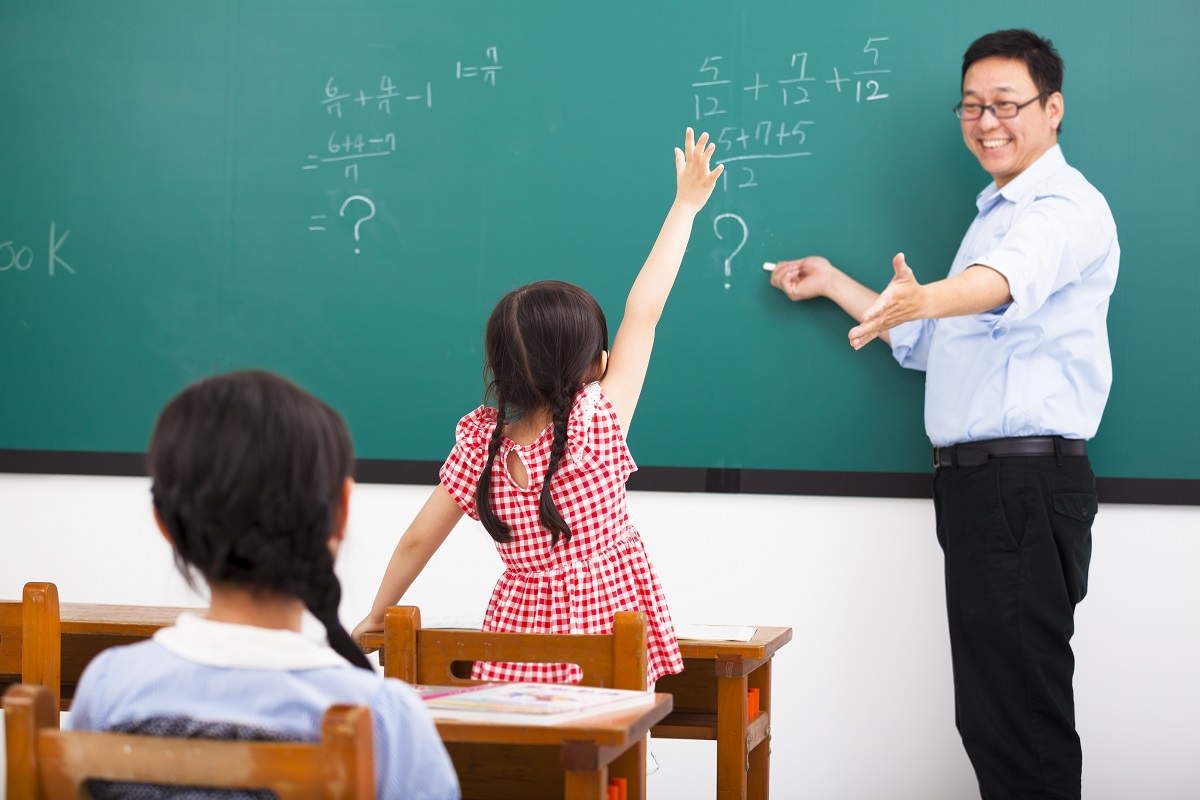Expert Primary Science Tuition Singapore for Understanding Complex Concepts
Expert Primary Science Tuition Singapore for Understanding Complex Concepts
Blog Article
A Comprehensive Guide to the Various Learning Methods in Main Scientific Research Guideline
The expedition of diverse knowing techniques in primary scientific research direction offers a possibility for teachers to improve student involvement and understanding considerably. By analyzing hands-on understanding methods, inquiry-based methods, and collaborative approaches, we can determine reliable methods that accommodate numerous learning designs. Furthermore, the integration of innovation and distinguished guideline plays a critical duty in fostering an inclusive environment. The inquiry stays: exactly how can these techniques be effectively applied in the classroom to maximize their influence? The answer depends on a more detailed analysis of each technique and its implications for mentor scientific research.

Hands-On Discovering Strategies
Hands-on learning techniques play a pivotal role in main science direction, involving trainees in active exploration and testing. These approaches permit students to connect straight with products and sensations, cultivating a much deeper understanding of clinical principles. By utilizing manipulatives, versions, and real-life experiments, instructors develop a setting where students can observe, hypothesize, and test their concepts.
Such strategies not just improve understanding however likewise cultivate important reasoning and analytical skills. When students participate in tasks like constructing basic makers, planting seeds, or conducting chain reactions, they are motivated to ask questions and seek answers through their very own monitorings. This experiential approach helps to demystify intricate clinical principles, making them much more available and relatable.
In addition, hands-on discovering promotes cooperation amongst peers, as students often work in teams to carry out experiments or share findings. This synergy not only enhances their knowing experience yet likewise develops essential social abilities. Ultimately, incorporating hands-on techniques in key science guideline fosters a long-lasting love of discovering and curiosity concerning the environment, laying a solid foundation for future scholastic pursuits in science and beyond.
Inquiry-Based Discovering
Inquiry-based knowing is an educational method that urges students to ask concerns, explore phenomena, and build their very own understanding of clinical concepts. This method shifts the focus from typical teacher-led instruction to a much more student-centered experience, where students take the effort in their instructional journey. By promoting inquisitiveness, inquiry-based learning promotes deeper interaction with the product, allowing trainees to discover subjects in a meaningful context.
In method, this technique often involves hands-on experiments, observations, and important reasoning activities that align carefully with the scientific technique. Trainees are motivated to create theories, layout investigations, and analyze data, which cultivates crucial skills such as problem-solving and analytical reasoning. The role of the instructor in this structure is to assist in expedition, leading pupils via the query procedure while encouraging independent thought and partnership.
Furthermore, inquiry-based knowing nurtures a feeling of possession over the discovering procedure, inspiring students to seek expertise proactively. This technique not only boosts understanding of clinical concepts but likewise promotes a long-lasting love for knowing, outfitting trainees with the abilities required to navigate an increasingly complicated globe.
Collaborative Discovering Approaches
Joint understanding approaches empower trainees to participate in meaningful interactions with peers, promoting a common duty for their educational outcomes. In key scientific research guideline, these techniques motivate learners to interact to check out scientific ideas, solve troubles, and perform experiments (primary science tuition Singapore). By joining group tasks, trainees can take advantage of diverse viewpoints, allowing for richer understanding and retention of clinical understanding
One trick aspect of collective understanding is the focus on interaction abilities. Trainees should articulate their thoughts, pay attention proactively to others, and work out ideas, all of which are vital proficiencies in both scholastic and real-world contexts. This social interaction not only boosts Find Out More their understanding of clinical concepts yet additionally promotes synergy and problem resolution skills.
When pupils see the value of their payments within a team, they are much more likely to take possession of their learning trip. Overall, integrating joint knowing techniques in primary science guideline cultivates a vibrant learning atmosphere that prepares pupils for future academic and social difficulties.
Modern Technology Integration in Science
The combination of modern technology in main scientific research instruction enhances discovering experiences by giving innovative tools and resources that support different training approaches, consisting of joint learning - primary science tuition Singapore. Using digital systems, simulations, and interactive applications permits students to engage deeply with scientific ideas, assisting in a much more hands-on technique to understanding
Online research laboratories, for example, allow students to perform experiments securely and effectively, advertising inquiry-based discovering. These devices can simulate real-world scientific scenarios, allowing trainees to picture complicated processes that would be challenging to replicate in a conventional classroom setup. In addition, modern technology fosters communication and collaboration amongst pupils, as they can share searchings for and interact on tasks via on the internet platforms.
Furthermore, multimedia discussions and academic video clips can improve lessons by accommodating diverse understanding designs, making abstract concepts extra easily accessible. Information analysis tools likewise empower pupils to collect and analyze scientific information, strengthening vital thinking abilities. In general, the strategic unification of technology in main science direction not just improves involvement but also prepares pupils for a technologically innovative society, furnishing them with essential skills for future clinical endeavors.
Separated Guideline Techniques
Differentiated direction strategies are vital for resolving the diverse requirements of students in key science education. These methods make it possible for educators to customize their teaching approaches to accommodate differing capacities, interests, and finding out styles within the class. By employing distinguished direction, educators can create have a peek here an inclusive environment that fosters interaction and improves understanding of clinical concepts.
One efficient method is to utilize versatile organizing, which enables trainees to work together with peers at similar skill levels or with differing point of views. This technique motivates peer discovering and advertises important reasoning. Furthermore, providing choices in assignments can empower pupils, allowing them to select projects that reverberate with their passions while still satisfying curricular objectives.
Moreover, incorporating tiered jobs is an additional useful technique. By creating tasks with varying degrees of intricacy, instructors can make certain that all trainees are appropriately tested, no matter of their efficiency. Using formative analyses to evaluate understanding more allows teachers to change their instructional approaches dynamically, making sure that each student receives the assistance they need.
Inevitably, carrying out distinguished guideline techniques in key science education and learning not only boosts pupil discovering outcomes however also cultivates an interest for science, preparing pupils for future academic searches.

Final Thought
In summary, reliable main scientific research direction demands a diverse approach that includes hands-on learning, inquiry-based techniques, and joint techniques. The assimilation of modern technology and distinguished guideline even more deals with diverse discovering designs, fostering a setting conducive to expedition and vital reasoning. By implementing these methods, instructors can enhance trainee involvement and comprehension, eventually supporting a long-lasting passion for science and inquiry. Such detailed methodologies are vital for establishing educated and interested future scientists.
The exploration of diverse knowing methods in primary scientific research instruction offers a possibility for educators to improve trainee engagement and comprehension substantially.Hands-on discovering methods play a critical role in primary scientific research guideline, engaging trainees in active expedition and testing.Inquiry-based knowing is a training method that encourages students to ask inquiries, explore sensations, and build their own understanding of clinical helpful site principles.Collective knowing techniques encourage pupils to engage in purposeful communications with peers, fostering a common obligation for their academic results. In general, incorporating joint understanding methods in primary scientific research direction grows a dynamic knowing atmosphere that prepares trainees for future academic and social obstacles.
Report this page